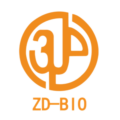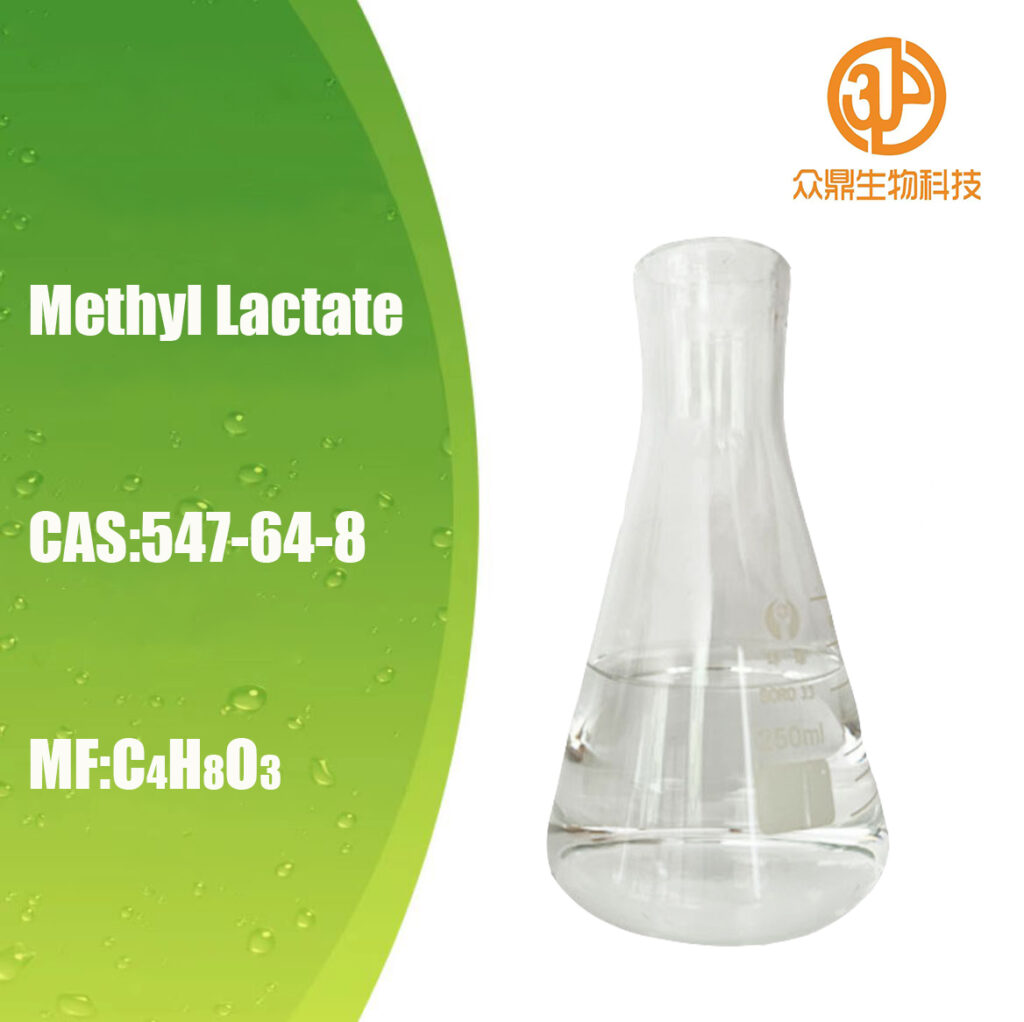استرات اللاكتات هي منتجات تفاعل الأسترة بين حمض اللاكتيك والكحولات، مع صيغة التركيب الكيميائي العامة R-COO-R'، حيث يمثل R الجزء الهيدروكربوني من حمض اللاكتيك، ويمثل R' الجزء المتبقي من الكحول بعد إزالة المجموعة الهيدروكسيلية. يمنح هذا التركيب مجموعة من الخصائص الفيزيائية والكيميائية الفريدة لإسترات اللاكتات. من حيث الذوبان، تُظهر إسترات اللاكتات أداءً ممتازًا، حيث تكون قابلة للامتزاج مع مجموعة متنوعة من المذيبات العضوية، بما في ذلك الماء والكحول والهيدروكربونات العطرية والإسترات والهيدروكربونات والزيوت. هذا يجعلها فعالة للغاية في العديد من التفاعلات الكيميائية والعمليات الصناعية التي تتطلب مشاركة المذيبات، وتلعب دورًا حاسمًا في تعزيز التفاعلات أو تشتيت المواد الأخرى بشكل موحد.
في صناعة الدهانات والطلاءات، تلعب إسترات اللاكتات دورًا لا غنى عنه في تحسين الأداء العام للطلاءات. تتمتع إسترات اللاكتات بتأثير إيجابي على خصائص تكوين الفيلم للدهانات، مما يمكنها من تكوين فيلم موحد ومستمر وكثيف بعد التطبيق. وذلك لأن إسترات اللاكتات تمتلك قابلية ذوبان وتقلب ممتازة، مما يساعد الراتنجات والمواد الأخرى المكونة للفيلم على التدفق والترتيب بشكل مناسب أثناء عملية التجفيف لتشكيل بنية فيلم كاملة. في طلاءات الأثاث عالية الجودة، تعمل إضافة إسترات اللاكتات على جعل الفيلم أكثر سلاسة وتناسقًا، مما يقلل بشكل فعال من العيوب مثل الثقوب والفقاعات، وبالتالي تحسين مظهر وجودة المنتج.
استرات اللاكتات كما تعمل على تحسين لمعان الطلاءات بشكل كبير. حيث تعمل خصائصها المذيبة الممتازة على تمكين تشتت أفضل للأصباغ والحشوات في الطلاء، مما يقلل من تشتت الضوء ويزيد من قدرة الطلاء على عكس الضوء، مما يؤدي إلى لمعان أعلى. في طلاءات السيارات، يجعل استخدام إسترات اللاكتات طلاء سطح السيارة أكثر لمعانًا وجاذبية، ولا يعزز الجاذبية الجمالية للسيارة فحسب، بل يحسن أيضًا من مقاومتها للطقس ومتانتها.
علاوة على ذلك، يمكن لإسترات اللاكتات أن تعزز التصاق الطلاءات. ويمكنها تكوين روابط كيميائية أو قوى بين الجزيئات مع الجزيئات على سطح الركيزة، مما يضمن التصاق الطلاء بإحكام بالسطح وأقل عرضة للتقشر. في طلاءات الجدران الخارجية للمباني، يساعد وجود إسترات اللاكتات الطلاء على الالتصاق بشكل آمن بسطح الجدار، والحفاظ على التصاق جيد حتى في الظروف البيئية القاسية مثل التعرض الطويل للرياح وأشعة الشمس والأمطار، وبالتالي إطالة عمر خدمة الطلاء.
في صناعة الإلكترونيات، استرات اللاكتاتأصبحت المواد الكيميائية، وخاصة لاكتات الإيثيل، ذات أهمية متزايدة وتوفر دعمًا قويًا لتطوير صناعة الإلكترونيات. في التنظيف الإلكتروني، تعتبر إسترات اللاكتات عوامل تنظيف مثالية. يتميز لاكتات الإيثيل بنقطة غليان عالية وتقلب منخفض، مع نقطة غليان تبلغ حوالي 154 درجة مئوية، مما يجعله مستقرًا في شكل سائل أثناء عمليات التنظيف وليس عرضة للتبخر السريع. في الوقت نفسه، يتمتع بقدرة عالية على الذوبان للزيوت والبروتينات البشرية والأوساخ القابلة للذوبان في الماء والمواد الملوثة الأخرى، مما يزيل الملوثات المختلفة بشكل فعال من أسطح المكونات الإلكترونية. في تنظيف لوحات شاشات الكريستال السائل (LCD)، يمكن لاكتات الإيثيل أن يذوب بسرعة ويزيل المادة اللاصقة المتبقية من عملية التعبئة والتغليف، مما يضمن نظافة اللوحة وتمكين إجراءات التعبئة والتغليف اللاحقة السلسة. أثناء تصنيع الرقاقة، يزيل لاكتات الإيثيل بفعالية الزيت والغبار والشوائب الأخرى من سطح الرقاقة. إذا لم تتم إزالة هذه الملوثات في الوقت المناسب، فقد تؤثر سلبًا على أداء الرقاقة وجودة الشريحة.
استرات اللاكتات كما توفر حماية ممتازة للمكونات الإلكترونية. وباعتبارها مادة فعّالة سطحية ذات جزيئات صغيرة بمجموعة هيدروكسيل، فإنها تتمتع بنفاذية جيدة ويمكنها تنظيف الأوساخ التي يصعب الوصول إليها في الفجوات والثقوب الصغيرة دون إتلاف المكونات الإلكترونية. وبالمقارنة مع بعض عوامل التنظيف الإلكترونية التقليدية، تتمتع إسترات اللاكتات بمزايا كونها غير سامة وقابلة للتحلل البيولوجي. ويمكن تصريف سائل نفايات التنظيف الخاص بها مباشرة دون التسبب في تلوث البيئة، وهو أمر بالغ الأهمية لصناعة الإلكترونيات التي تهتم بالبيئة. وفي تنظيف المكونات الإلكترونية الدقيقة، يضمن استخدام إسترات اللاكتات كعامل تنظيف فعالية التنظيف مع تقليل خطر التآكل أو التلف للمكونات، وتحسين إنتاجية الأجزاء الإلكترونية وعمر خدمتها.
بالإضافة إلى ذلك، استرات اللاكتات تلعب دورًا مهمًا في عمليات تصنيع وتنظيف المقاومات الضوئية. يمكن استخدام لاكتات الإيثيل من الدرجة الإلكترونية كمذيب للمقاومات الضوئية، حيث يذيب الراتنجات والمواد المسببة للحساسية الضوئية والمواد المضافة بشكل فعال، مما يشكل مقاومًا ضوئيًا سائلًا موحدًا ومستقرًا يضمن نقل النمط بدقة أثناء عملية الطباعة الضوئية. بعد نقش المقاوم الضوئي، يجب تنظيف أي مادة زائدة. تعتبر مذيبات التنظيف التقليدية مثل NMP (N-Methyl-2-pyrrolidone) سامة في العديد من البلدان، مما يشكل مخاطر على البيئة وصحة العمال. يمكن أن يحل لاكتات الإيثيل محل NMP في تنظيف المقاوم الضوئي، ليس فقط لتحقيق نتائج تنظيف ممتازة ولكن أيضًا تلبية معايير حماية البيئة، مما يجعله اتجاهًا للتطور في صناعة تنظيف المقاوم الضوئي.
في صناعة البتروكيماويات، يمكن استخدام إسترات اللاكتات كمواد خام للتخليق العضوي، والمشاركة في تفاعلات كيميائية مختلفة وتوفير طرق جديدة وخيارات المواد الخام لتخليق المركبات العضوية المعقدة. في تخليق المواد الكيميائية الدقيقة، يمكن أن تعمل إسترات اللاكتات كوسيط، وتخضع لسلسلة من التفاعلات الكيميائية للتحول إلى مركبات ذات وظائف وهياكل محددة، مما يثري تنوع وأداء المنتجات الكيميائية.
في الزراعة، تتمتع إسترات اللاكتات أيضًا بتطبيقات فريدة. يمكن لبعض إسترات اللاكتات تعزيز فعالية المبيدات الحشرية على النباتات من خلال زيادة التصاقها ونفاذيتها على سطح النبات، وبالتالي تحسين معدل استخدام المبيدات الحشرية وممارسة تأثيراتها الحشرية والبكتيريا وغيرها بشكل أكثر فعالية. أظهرت الأبحاث أيضًا أن إسترات اللاكتات المؤثرة يمكن أن تقلل من ظاهرة الانجراف أثناء معالجة النبات، مما يسمح بتطبيق المبيدات الحشرية بدقة أكبر على النباتات المستهدفة، وتحسين كفاءة التطبيق مع تقليل التأثير البيئي.
مع التركيز العالمي المتزايد على حماية البيئة والتنمية المستدامة، تتمتع إسترات اللاكتات، باعتبارها مادة خضراء وصديقة للبيئة، بإمكانات سوقية هائلة. وفي المستقبل، مع التقدم التكنولوجي المستمر والابتكار، من المتوقع أن يتم تطبيق إسترات اللاكتات في المزيد من المجالات، وسيستمر تحسين أدائها وتحسينه. على سبيل المثال، في صناعة الأدوية، قد يتم تطوير أنظمة توصيل الأدوية الأكثر كفاءة وأنظمة الإطلاق المستمر القائمة على إسترات اللاكتات لتحسين التأثيرات العلاجية والحد من الآثار الجانبية. في صناعة الإلكترونيات، مع استمرار تطور المنتجات الإلكترونية نحو التصغير والأداء العالي، يتزايد الطلب على عوامل التنظيف الإلكترونية ومواد المقاومة الضوئية. ومن المتوقع أن تستحوذ إسترات اللاكتات، بفضل صداقتها للبيئة وكفاءتها، على حصة سوقية أكبر في هذا القطاع.

